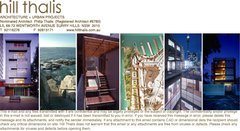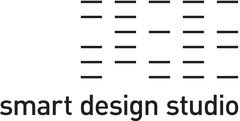Ian Moore Architects

The practice has won numerous national and international awards; including the apartment building Altair, which won both ‘Best Building in the Australasia/Oceania region’ and ‘Best Housing Scheme in the World’ at the World Architecture Awards in 2002, Berlin. In 2006 a Dedalo Minosse International Prize Commendation and an International Architecture Award, awarded by The Chicago Athenaeum: Museum of Architecture + Design, both for the 138 Barcom Avenue Apartments. The practice currently has projects in Sydney, Broome and Auckland.
Driving directions to Ian Moore Architects on map
Ian Moore Architects on Google Maps
Projects:
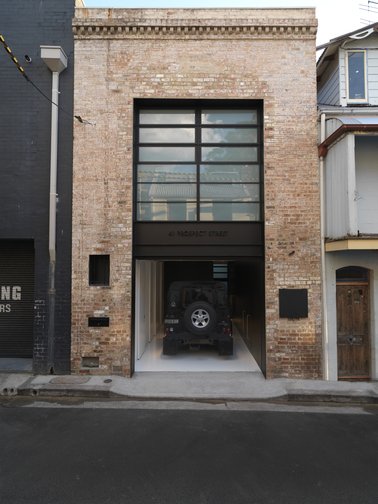
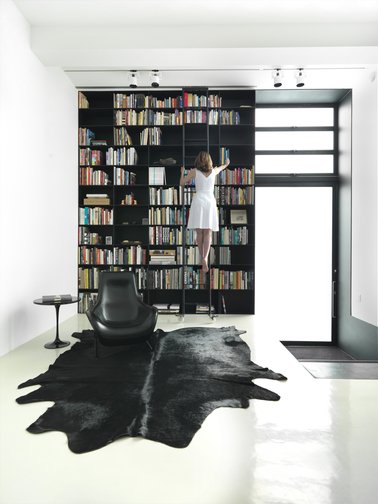
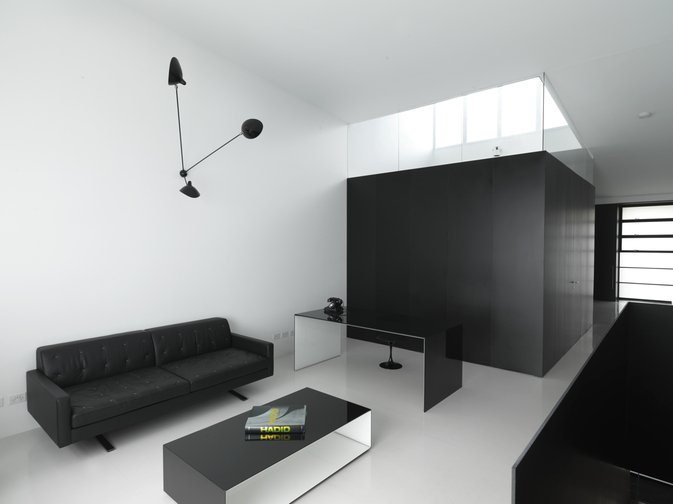
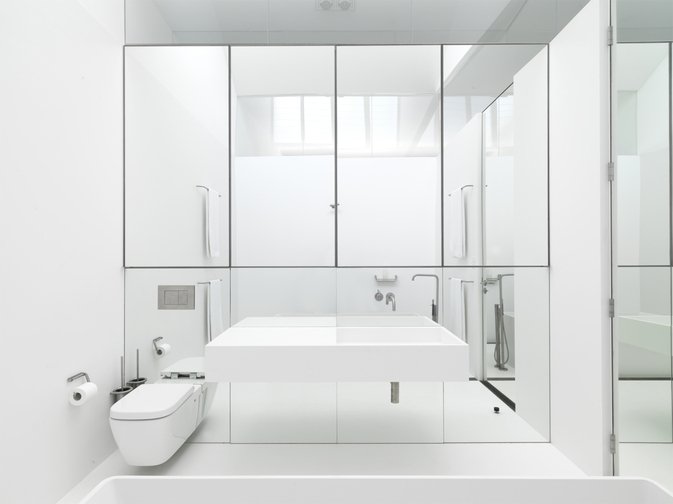
Strelein Warehouse
Surry Hills, New South Wales, 2010
This project is the conversion of a late19th century warehouse into a 2 level residence. The property has 2 street frontages, allowing clear separation of pedestrian and vehicle entries. Internally a 1.7 metre height difference between the 2 streets is utilised to create the tall volume of the living space. The kitchen occupies the half level above and is screened by a black steel plate structure incorporating built-in seating. The garage opens off the kitchen, with its’ internal dimensions defining the major strategic move within the design. Once the guest bathroom/laundry/storage and the stair opposite were deducted, together with the minimum width required for the garage, the remainder was 10 millimetres with which to construct the wall between the garage and stair. This led to the adoption of the 10 millimetre thick steel plate structure that flows through to the entry portals, the kitchen surround and bookcase. All existing structure has been retained, lined and painted white, while all new elements are painted black. This concept is carried through to the black and white rubber flooring. All joinery is finished in black anodised aluminium, including the bathroom located at the centre of the upper level.
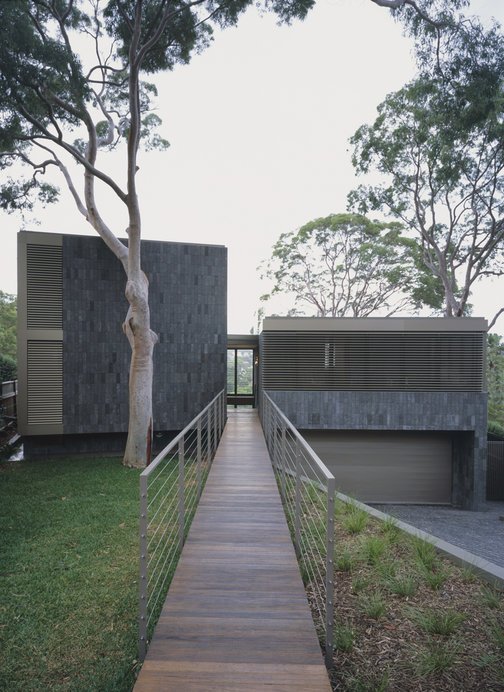
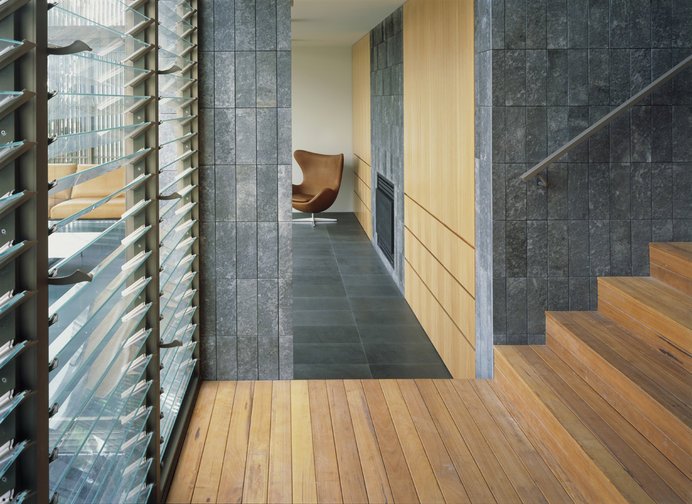
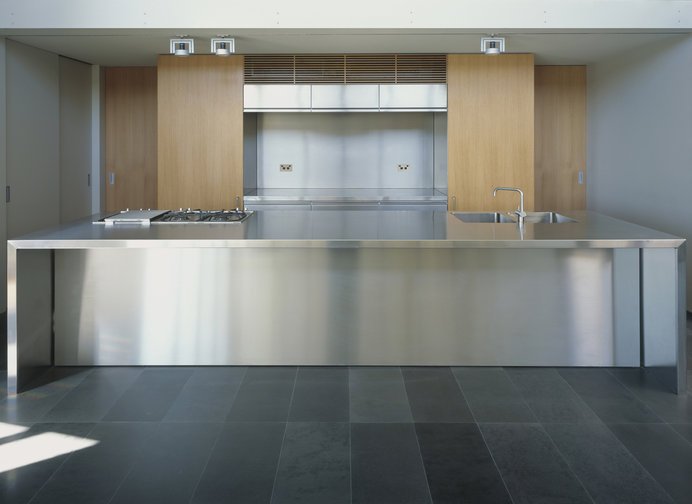
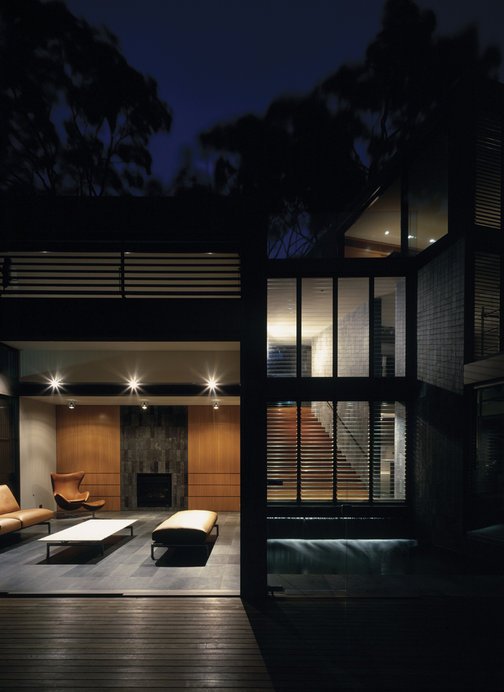
Balmoral House
Balmoral Beach, Sydney, 2006
This 4 bedroom house is sited on an irregular shaped block of land on the slope above Sydney’s Balmoral Beach. The 2 side boundaries of the site are not parallel and there is a significant diagonal cross fall from southwest to northeast, in addition there are 4 substantial gum trees on the site which have all been retained and integrated into the design of the house. Two distinct pavilions have been designed of differing height to respond to the topography and Council height controls. The pavilions follow the alignment of their adjacent boundaries creating a wedge of space between the two. The entry bridge slips between these 2 pavilions into this space and cascades down a grand stair to the plunge pool and deck below. This is treated as external space with the Basalt stone cladding and hardwood decking of the exterior continuing seamlessly through this space and back again to the outside. This is emphasised by the frameless sliding glass entry door, which when closed is almost invisible, thus maintaining the view from the street and entry bridge through this space at all times.


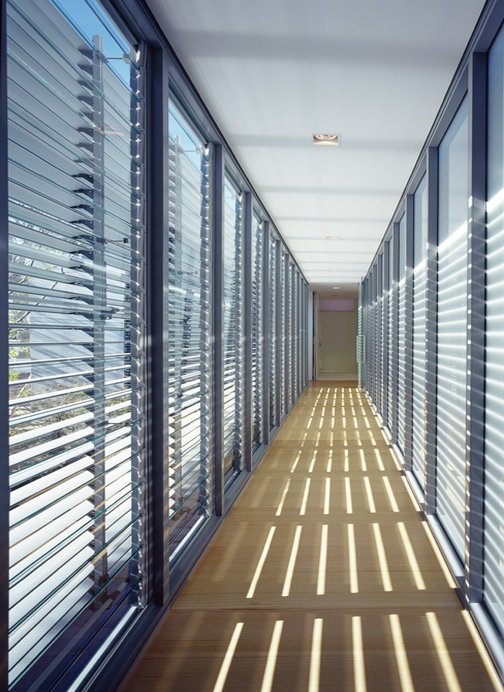
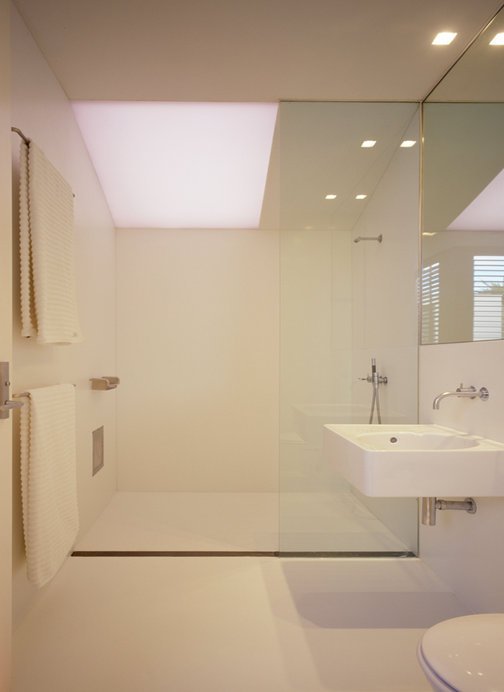
Fink House
Woollahra, Sydney, 2007
This is a renovation of an 1840s heritage listed sandstone cottage which was substantially added to in the 1980s. The front of the house could not be altered and any addition was not to be visible above the existing ridge line. The interior of the cottage, including its sandstone walls, was in poor condition, so a strategy of concealment was adopted where a new plasterboard skin covers all walls and two existing windows in the back wall of the cottage. The original front windows are retained but covered with fabric scrims to provide privacy but admit light. The front door is the only original element visible on the interior. The 1980s additions were gutted and new windows and doors fitted to existing openings while the loft within the gabled roof of the garage was demolished and a full second level added. The first conceptual innovation in the project was the bridge over the courtyard. The main house was simply too small to accommodate the client’s brief for three bedrooms and two bathrooms. The bridge allowed for the main bedroom and ensuite to be located above the garage at the rear of the property but still physically connected to and on the same level as the children’s bedrooms.



